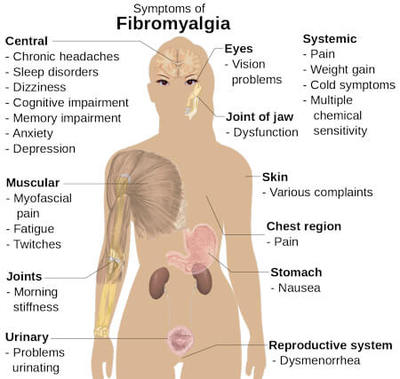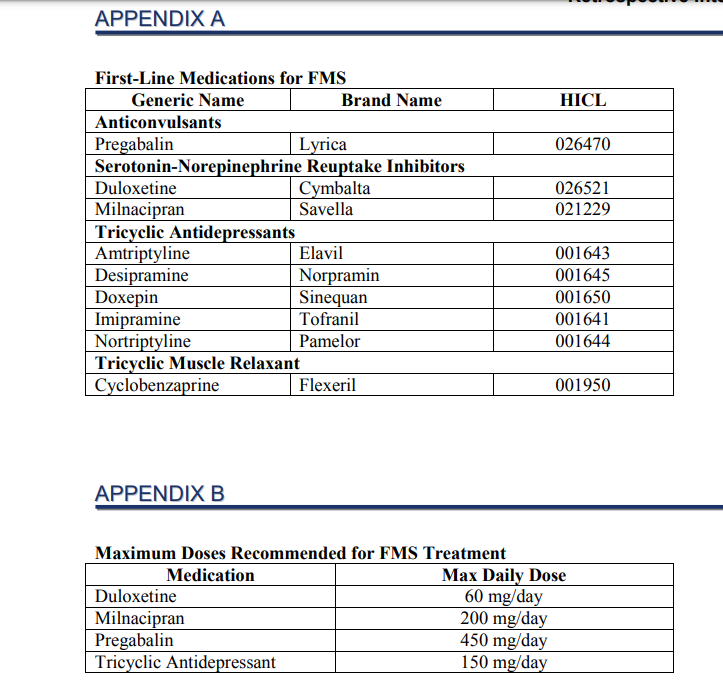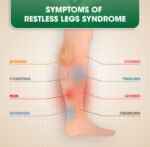Many people haven’t heard and have no idea what the condition Fibromyalgia is. It is a disabling form of state that creates debilitating fatigue, sleep disturbance, travelling pain and joint stiffness. In addition , people affected by the disorder frequently experience a range of other symptoms that involve multiple body systems.
Fibromyalgia is a chronic pain condition characterized by widespread musculoskeletal pain, fatigue, and tenderness in specific areas of the body. While there is no cure for fibromyalgia, medications can be used to manage its symptoms and improve a person’s quality of life. The choice of medications may vary from person to person, and a healthcare provider will typically tailor the treatment plan to the individual’s specific needs.

- What are the signs and symptoms of fibromyalgia?
How Fibromyalgia is Diagnosed ?
Diagnosing fibromyalgia can be challenging because there are no specific laboratory tests or imaging studies that can definitively confirm the condition. Instead, the diagnosis of fibromyalgia is typically made based on a combination of clinical evaluation, medical history, and the presence of specific symptoms. Here is how fibromyalgia is generally diagnosed:
- Medical History: The process often begins with a thorough medical history. Your healthcare provider will ask about your symptoms, their duration, and their impact on your daily life. They may inquire about family history, previous medical conditions, and any trauma or stressors that might have triggered or worsened your symptoms.
- Physical Examination: A physical examination is a crucial part of the diagnostic process. The healthcare provider will typically check for the presence of tender points on your body. These tender points are specific areas where pain is often more pronounced in fibromyalgia patients. While the concept of tender points has been somewhat de-emphasized in more recent diagnostic criteria, they are still sometimes used to help confirm the diagnosis.
- Symptom Assessment: Fibromyalgia is characterized by a range of symptoms, including widespread pain, fatigue, sleep disturbances, and cognitive difficulties (often referred to as “fibro fog”). Your healthcare provider will assess the presence and severity of these symptoms.
- Exclusion of Other Conditions: Since fibromyalgia symptoms can overlap with other medical conditions, your healthcare provider will typically perform tests to rule out other conditions that could be causing your symptoms. These conditions may include rheumatoid arthritis, lupus, multiple sclerosis, and thyroid disorders, among others.
- Diagnostic Criteria: The diagnosis of fibromyalgia may be based on widely accepted criteria, such as those established by the American College of Rheumatology (ACR). The 1990 ACR criteria required the presence of tender points, but the 2010 ACR criteria placed greater emphasis on assessing widespread pain and other associated symptoms. According to the 2010 criteria, fibromyalgia can be diagnosed if the following conditions are met:
- Widespread pain lasting at least three months.
- Tender points are no longer required for diagnosis.
- The absence of another underlying medical condition that could explain the symptoms.
- Patient Questionnaires: Your healthcare provider may ask you to complete questionnaires that assess your pain, fatigue, and other symptoms. These questionnaires can help in evaluating the severity and impact of fibromyalgia on your life.
- Laboratory Tests: Although there are no specific blood tests to diagnose fibromyalgia, your healthcare provider may order blood tests to rule out other conditions or to assess factors such as inflammation or thyroid function.
The Pain of FM has no Boundaries
Diagnosing fibromyalgia requires a specific approach. A knowledgeable healthcare provider will often conduct a tender point test, gently applying pressure at approximately 4 kilograms of force to 18 specific tender points on the body. If a patient experiences pain in 11 of these 18 tender points, in conjunction with meeting other diagnostic criteria, a fibromyalgia diagnosis may be considered.
The pain experienced in fibromyalgia knows no boundaries. It’s a condition where doctors can’t visually pinpoint or fully comprehend the sources of a patient’s pain or fatigue. Instead, they may observe the patient’s constant struggle with these symptoms, which might mistakenly lead them to conclude that the issues are rooted in psychological factors. Historically, pain was often associated with obvious tissue injury, and since there is no visible source of tissue injury in fibromyalgia patients, it can be challenging for some doctors to accept these symptoms as real. If a doctor dismisses the reality of the symptoms, individuals suffering from fibromyalgia should seek out another healthcare provider who believes in their condition and is willing to collaborate on symptom management.
In my personal experience as a fibromyalgia sufferer, it wasn’t until I consulted the fourth GP, based on a recommendation from a fellow sufferer, that I found a sympathetic ear who took my condition seriously. So, if you encounter such a GP during your journey, do not hesitate to recommend them to others.
Emotional support is essential for fibromyalgia sufferers due to the chronic nature of the condition, which can lead to feelings of depression. Counseling and antidepressant therapies can be valuable tools for managing this aspect of fibromyalgia.
Once fibromyalgia takes hold, it becomes important to acknowledge that pursuing your current career may become more challenging, depending on the severity of your symptoms. The very nature of this condition can make even the smallest exertion leave you completely drained.
Medications play a significant role in managing fibromyalgia, as they can help individuals function as normally as possible. Finding the right medication may take time, and maintaining a positive outlook is crucial for adapting to life with this condition and striving to lead as normal a lifestyle as possible.

What are Fibromyalgia Medications ?
Some common medications used to manage fibromyalgia symptoms include:
- Pain Relievers: Over-the-counter pain relievers like acetaminophen (Tylenol) or nonsteroidal anti-inflammatory drugs (NSAIDs) such as ibuprofen (Advil) or naproxen (Aleve) may be recommended to alleviate pain and inflammation. However, they are often less effective in managing fibromyalgia pain.
- Antidepressants: Certain antidepressant medications can be useful for managing fibromyalgia. They may help alleviate pain, improve sleep, and ease depression and anxiety often associated with the condition. Two types commonly prescribed are:
- Tricyclic Antidepressants (TCAs): Examples include amitriptyline (Elavil) and nortriptyline (Pamelor).
- Serotonin and Norepinephrine Reuptake Inhibitors (SNRIs): Duloxetine (Cymbalta) and milnacipran (Savella) are examples of SNRIs often used.
- Anti-Seizure Medications: Some medications originally developed to treat epilepsy have been found to be effective in managing fibromyalgia pain. Pregabalin (Lyrica) and gabapentin (Neurontin) are examples.
- Muscle Relaxants: Medications like cyclobenzaprine (Flexeril) may be prescribed to relieve muscle spasms and improve sleep quality.
- Sleep Aids: Sleep disturbances are common in fibromyalgia, and medications like zolpidem (Ambien) or trazodone may be used to improve sleep.
- Opioid Medications: In some cases, opioid medications may be prescribed for severe pain that doesn’t respond to other treatments. However, opioids are typically used as a last resort due to the risk of dependence and addiction.
- Other Medications: In some cases, medications like tramadol, benzodiazepines (for anxiety and sleep), and low-dose naltrexone may be considered, but their effectiveness varies from person to person.
It’s important to note that a comprehensive approach to managing fibromyalgia often includes more than just medication. Lifestyle changes, physical therapy, exercise, and stress management techniques can also be valuable in managing symptoms and improving overall well-being.
Primary Recommended Treatment of Fibromyalgia
The three primary recommended treatments for fibromyalgia include:
- Physical Activity:Staying physically active is vital for managing fibromyalgia, despite the challenges that pain can present. Regular exercise has been demonstrated to alleviate pain and enhance overall quality of life. Your general practitioner (GP) may offer an exercise program suitable for your needs, which could be either supervised or conducted individually or in a group. It’s crucial to choose an exercise that you enjoy and can sustain over the long term, taking into account your personal preferences, lifestyle, health requirements, and physical abilities. For more details on exercise and relaxation techniques, refer to self-help resources for fibromyalgia.
- Psychotherapeutic Approaches:Two talking therapies have shown promise in reducing pain associated with fibromyalgia:
- Acceptance and Commitment Therapy (ACT): This therapy teaches you to accept elements beyond your control and commit to making changes that enhance your life. ACT has been linked to improvements in sleep quality, pain reduction, and coping with negative thoughts and emotions.
- Cognitive Behavioral Therapy (CBT): CBT is a talking therapy that helps individuals manage problems by altering thought patterns and behaviors. It can also enhance the quality of life for those living with chronic pain.
- Medications:Antidepressants are sometimes prescribed to alleviate fibromyalgia-related pain and can also help enhance sleep, emotional well-being, and overall quality of life. Several types of antidepressants are used in fibromyalgia treatment, including amitriptyline, citalopram, duloxetine, fluoxetine (Prozac), paroxetine, and sertraline. These medications are typically recommended for individuals aged 18 and over experiencing long-term pain. Your doctor will thoroughly discuss the pros and cons of an antidepressant with you before prescribing it.
It’s important to note that there is limited or no evidence supporting the efficacy of other types of medications in reducing long-term pain associated with fibromyalgia. If you are already taking other medications, your doctor will review and discuss them with you before prescribing an antidepressant.
In addition to these three primary treatments, acupuncture is another option that may reduce pain and improve the quality of life for some individuals with long-term pain, although its effects have been observed to last up to three months, and any potential longer-term benefits remain uncertain. Availability of acupuncture may also vary by location.
Pain Medications, Pain Relief, and Pain Management






